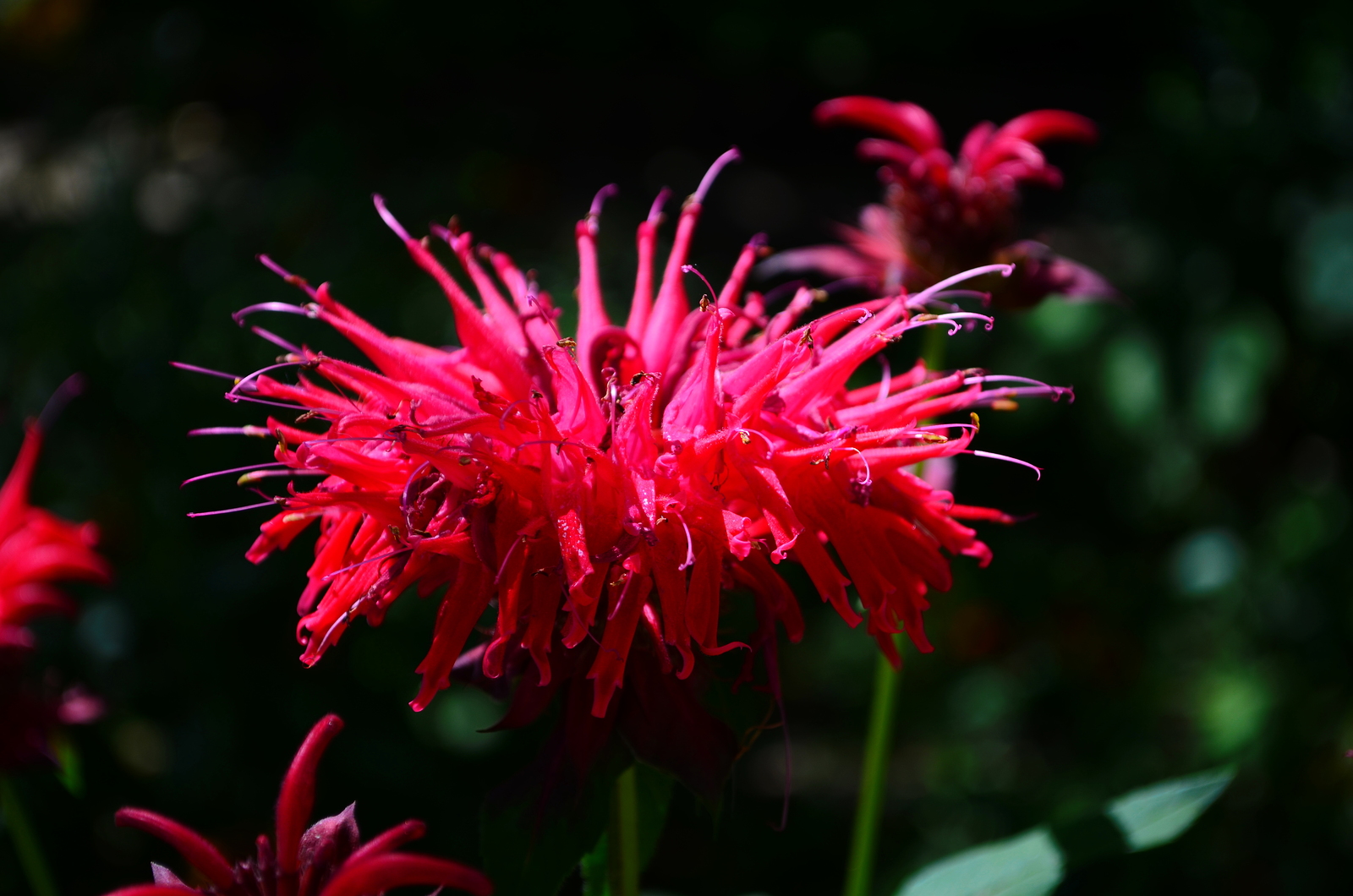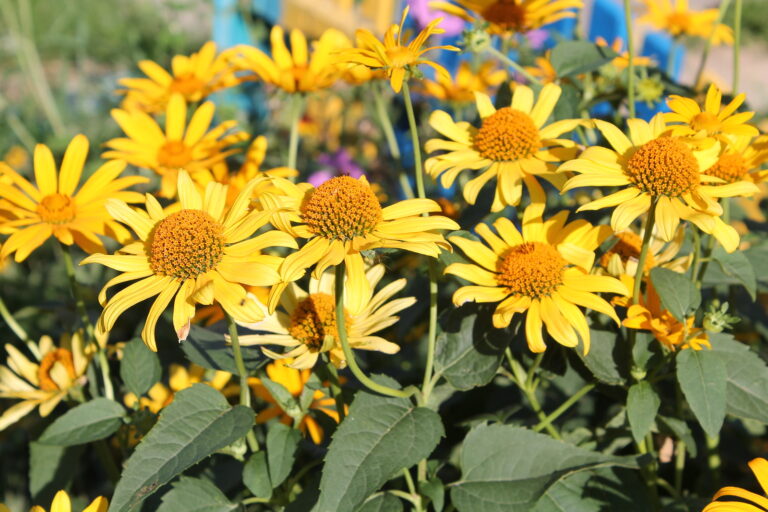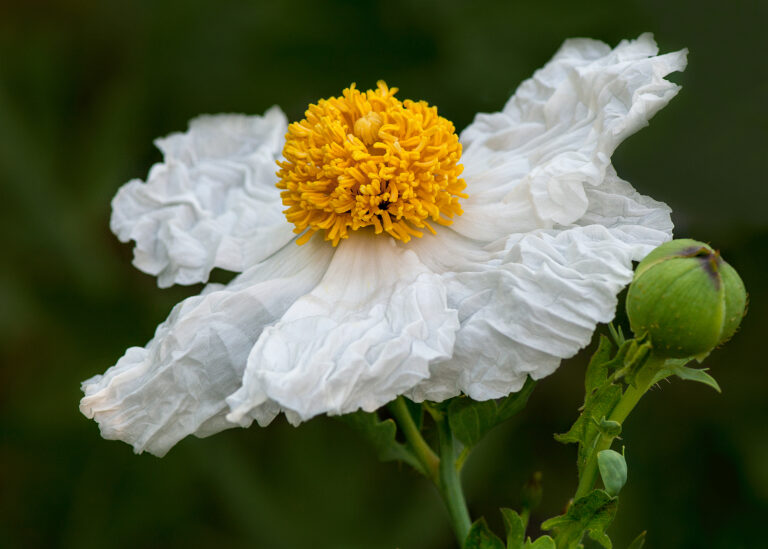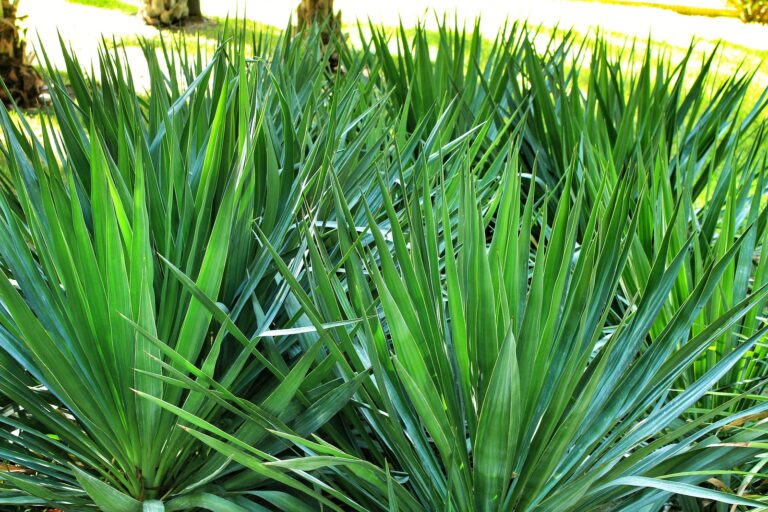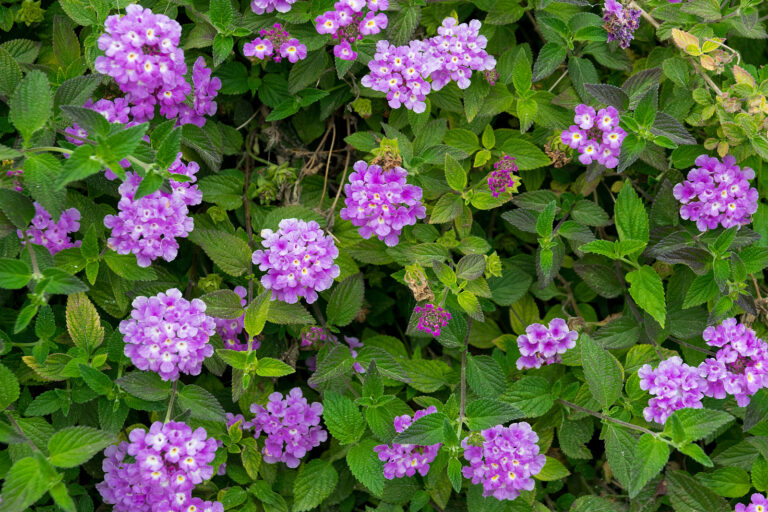How to Grow Bee Balm — Monarda
Monarda–commonly called bee balm–bears hooded red, pink, white, or lilac summer trumpet-shaped flowers borne in whorls. The flowers attract bees and butterflies. Monarda is a tall clump-forming perennial with, aromatic lance-shaped green leaves.
Monarda has dark green leaves with a strong pleasant odor of mint and basil.
Monarda is a perennial; it is not long-lived where winters are warm and summers are long and hot. It is prone to mildew where the soil is dry and the weather is humid.
Monarda is a genus of about 15 species of clump-forming rhizomatous perennials and annuals. They are native to the prairies and woodlands of North America.
Good Products for Growing Flowers at Amazon:
- Safer Brand Insect Killing Soap
- Monterey BT Caterpillar Killer
- Harris Diatomaceous Earth with Duster
- Bonide Sulfur Fungicide
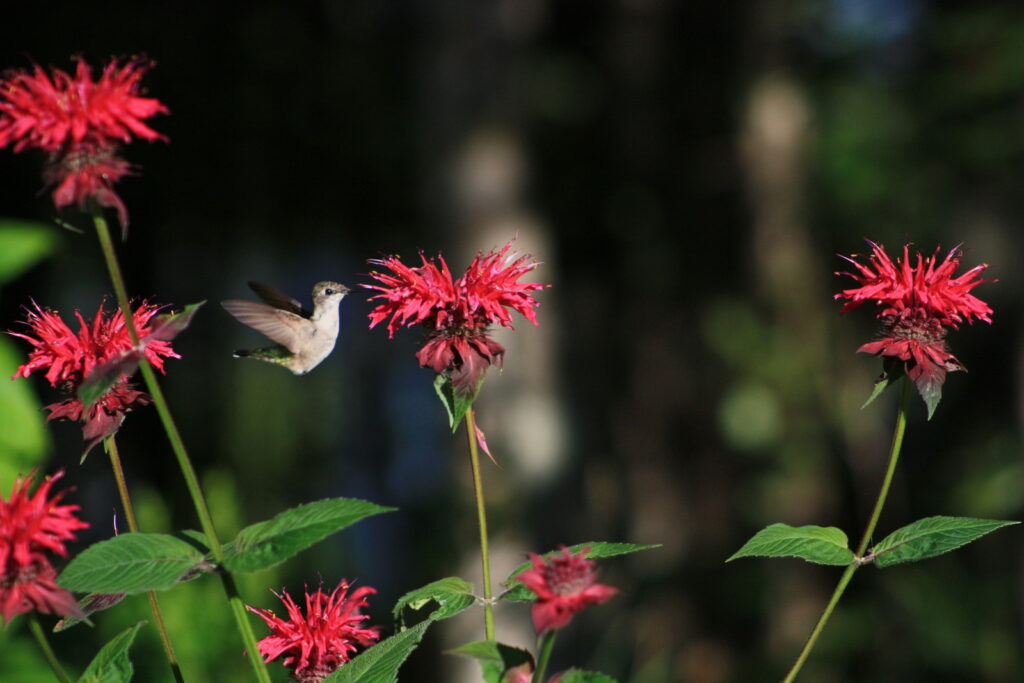
Get to know Monarda
- Plant type: Perennial
- Growing Zones and range: 4-9
- Hardiness: Hardy to -30°F (-34°C)
- Height and width: 2 to 4 feet (.6-1.2m) tall; 1 to 3 feet wide; dwarf varieties grow 12 to 18 inches (30-45cm) tall and wide
- Foliage: Opposite lance-shaped or oval sometimes aromatic mid-to dark green leaves on square stems.
- Flowers: Tubular, sage-like flowers
- Flower colors: Violet, red, pink, white
- Bloom time: Midsummer
- Uses: Attracts hummingbirds, mixed borders, cottage gardens
- Common name: Bee balm, bergamot, Oswego tea, horsemint
- Botanical name: Monarda didyma
- Family: Lamiaceae
- Origin: Praurues and woodlands of North America
Where to plant Monarda
- Grow Monarda in full sun in Zones 4-6, and grow in part shade in Zones 7-9.
- Plant Monarda in humus-rich, well-drained soil.
Monarda uses and companions
- Plant Monarda in a mixed or herbaceous border. Monarda attracts bees and hummingbirds.
- Plant Monarda in herb gardens and borders. Naturalize Monarda in a moist site.
- Good garden companions include Alchemilla mollis, Chrysanthemum superbum, Delphinium, Erigergon, Filipdendula, Hemerocallis, Lythrum.
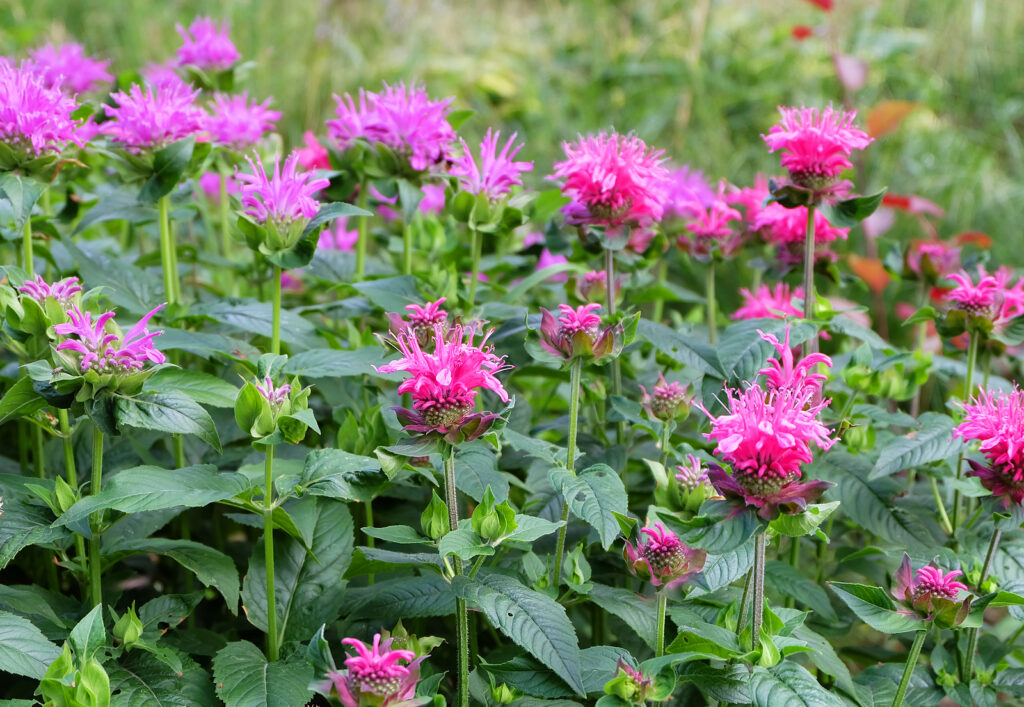
When to plant Monarda
- Set out established young Monarda plants in spring or fall.
Planting and spacing Monarda
- Space Monarda 1 to 3 feet apart depending on the variety. Give bee balm plenty of room for air circulation, otherwise, mildew may attack the plants.
How to water and feed Monarda
- Give Monarda moderate water; keep the soil evenly moist.
- Fertilize Monarda every 6 weeks with an all-purpose fertilizer or work a slow-release fertilizer into the soil in spring.
Monarda care
- Mulch around Monarda to conserve soil moisture.
- Trim spend blossoms to prolong blooming.
- Divide Monarda every 2 to 4 years as needed.
- Monarda is susceptible to mildew, so space plants for good air circulation.
- Cut plants back to the ground after flowering to promote fresh growth.
Monarda pests and diseases
- Monarda is prone to powdery mildew, rust, and leaf spot.
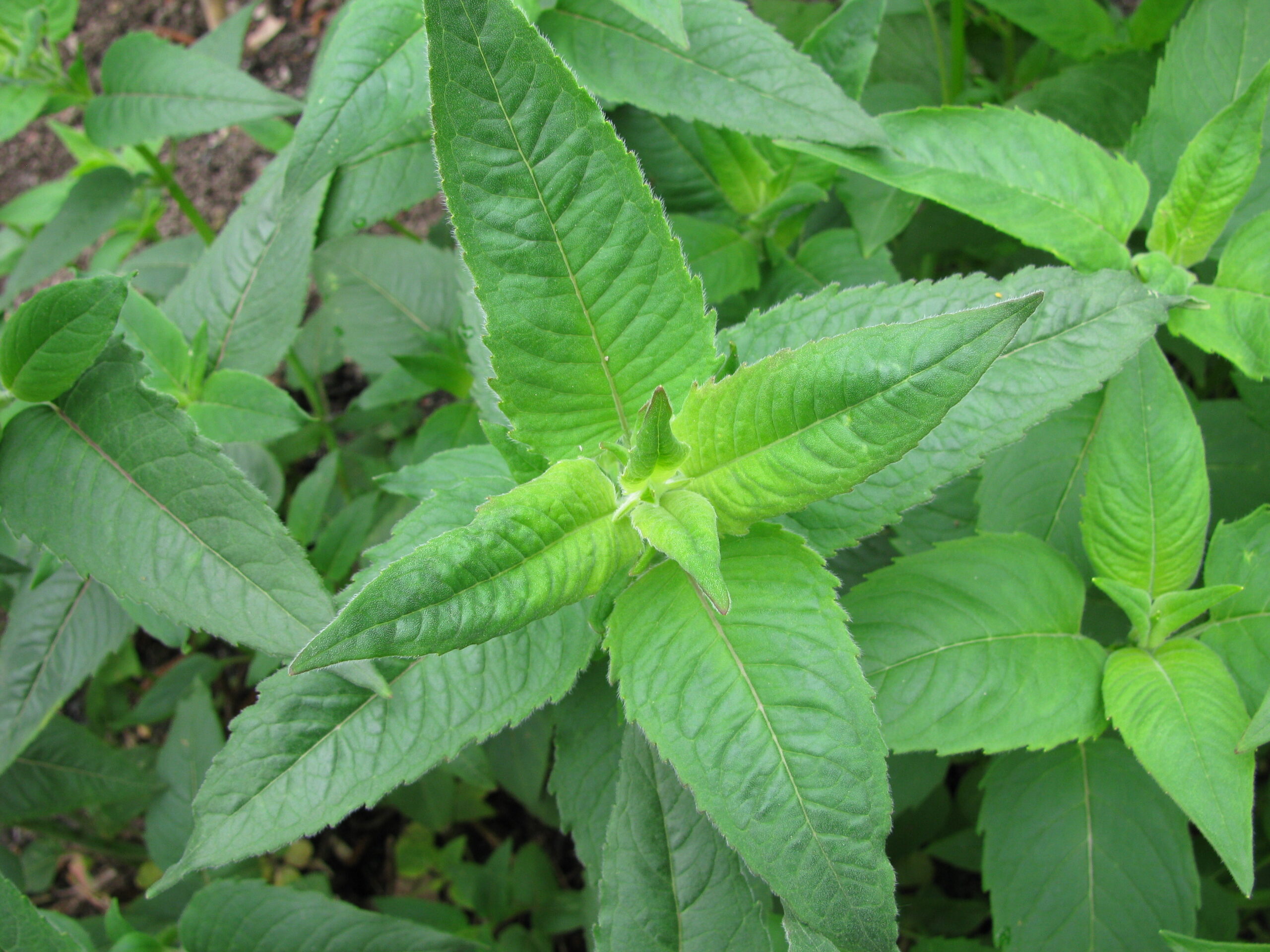
Monarda propagation
- Monarda seeds germinate in 7 to 4 days at 60° to 70°F (16°-21°C).
- Sow seeds in a container in a cold frame in spring or autumn.
- Divide clumps in spring before new growth commences.
- Root basal cuttings in spring.
Monarda varieties to grow
- Monarda didyma: native to the eastern United States; scarlet flowers surrounded by reddish bracts; there are several cultivars including Marshall’s Delight’, ‘Gardenview Scarlet’, ‘Stone’s Throw Pink’, and ‘Violet Queen’ are mildew resistant; Dwarf varieties grow 12 to 18 inches tall.
- M. fistulosa bears lavender flowers to light pink encircled by whitish bracts; less showy than M. didyma.
Monarda frequently asked questions
Q: Can I start bee balm indoors?
A: Bee balm (Monarda) can be started indoors 8 to 10 weeks before the last spring frost. Seeds must be stratified in order to germinate. Sow seeds in flats of moistened growing medium, cover with plastic wrap, and refrigerate for two weeks. Set them in a warm place after they come out of the refrigerator. Seedlings will be ready to transplant in six or seven weeks. Sow seeds outdoors in autumn for spring blooms.
Q: Why is bee balm also called Oswego Tea?
A: When American colonists protested the English tea tax which led to the Boston Tea Party, they quit drinking English tea. They instead brewed bee balm leaves. Bee balm was introduced to the American colonists by the New York Oswego Indians; it was called Oswego Tea.
Q: Is bee balm a good choice for growing in the garden?
A: Yes, it is an excellent choice. The colorful flowers are red, pink, purple, salmon, or white in early summer. The flowers attract hummingbirds. Bee balm is a perennial that grows 2 to 4 feet tall; the leaves have a minty fragrance.
Q: Can bee balm be grown from cuttings?
A: Bee balm and be grown from seeds or from cuttings. Start seeds at temperatures cooler than 55F for best germination. Seeds sprout in 15 to 20 days. Seeds can be started outdoors in early spring or sown in fall. Plants can also be divided.
Q: Is bee balm invasive?
A: Bee balm is related to mint; the roots travel rapidly underground and can be invasive. Install deep edging to contain the spread of bee balm. Bee balm tends to die in the centers; young growth travels underground from the original plant. Lift plants each year and replant the newer, outside pieces where you want them.

